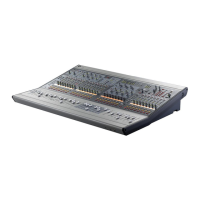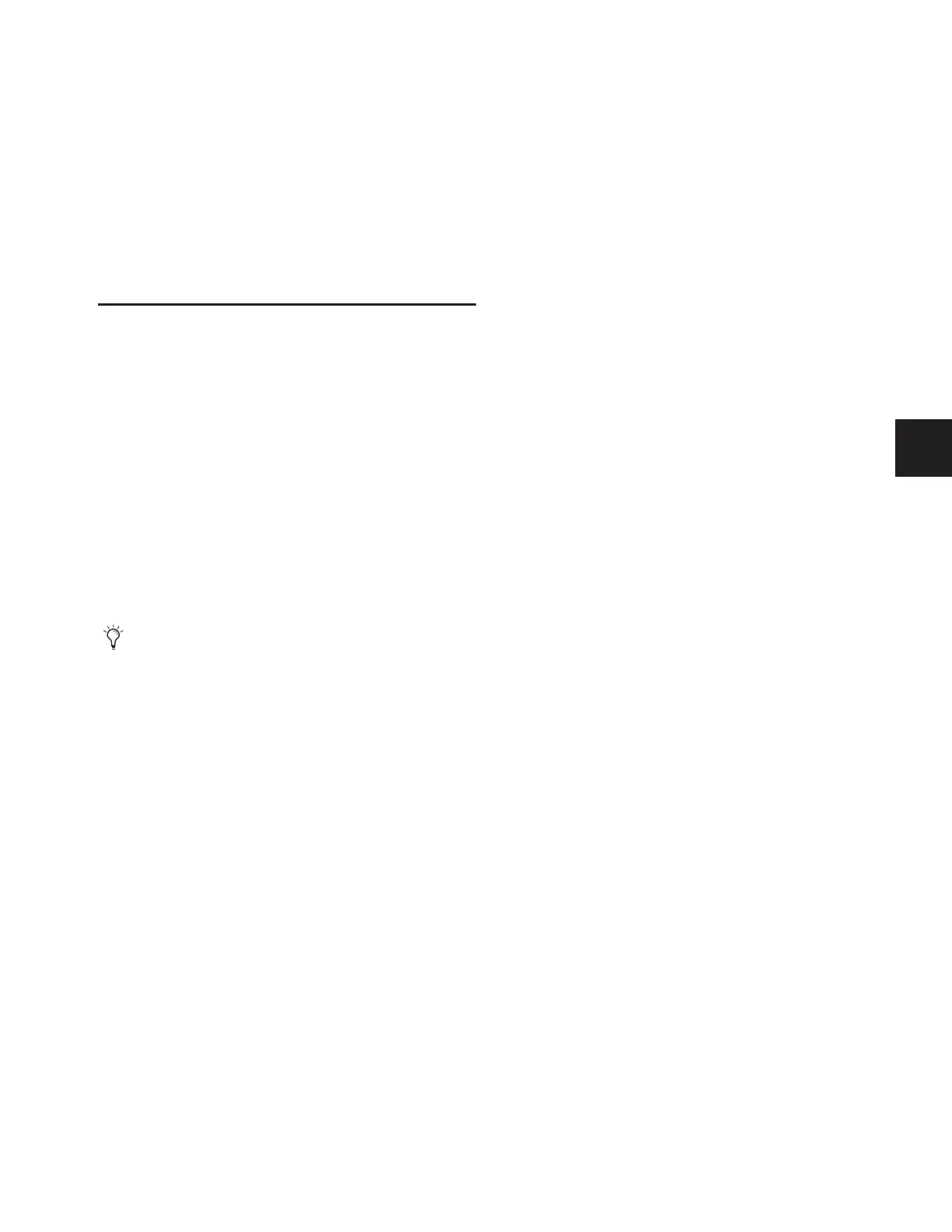Chapter 22: Events 195
Chapter 22: Events
This chapter introduces the Events window, and explains how
to use the Event List.
Introduction
A D-Show event consists of one or more triggers, which are con-
figured to cause one or more actions to occur.
Events can be very simple, such as a Footswitch input trigger-
ing a Recall Next Snapshot command. This is an example of a
single trigger (a footswitch input) causing a single action (Recall
Next Snapshot).
Events can also be quite complex and involve multiple trig-
gers and actions. For example, a single event can be defined so
that moving a specific fader above and/or below a certain level
sends a General Purpose output, recalls a specific snapshot and
mutes one or more channels. Multiple triggers can be consid-
ered conditionally using the available logic operators AND,
OR, and XOR.
Terminology
Event A defined combination of one or more triggers and one
or more actions. Each event serves as a type of software
“macro” in which you establish a cause-and-effect relation-
ship between one or more console functions (triggers) and
their results (actions).
Trigger A conditional check used to fire an event.
Action A console function, mode or other response resulting
from an event being triggered.
GPI General Purpose Interface, also commonly known as a
logic interface. D-Show Profile provides eight GPI inputs, and
eight GPI outputs.
Open GPI input or GPI output is floating, or at its reference
voltage.
Closed GPI input or GPI output is closed.
Footswitch Footswitch ports are functionally identical to GPI
inputs and share all of the same properties and behaviors.
Important Information about Snapshots and
Events
Because Events can trigger snapshot recalls, and because snap-
shot recalls can trigger other events, it is possible to create
logic “feedback loops.” For more information, see “Avoid
Feedback Loops” on page 203.
D-Show and D-Show Profile Support
The following describe differences in Events support and ca-
pabilities between D-Show Profile and D-Show consoles:
GPI
• The D-Show Profile console features eight GPI Inputs and
eight GPI Outputs, in addition to two Footswitches
• The D-Show console has two Footswitches but no GPI in-
puts or outputs. GPI appear as disabled within the D-Show
software.
Function Switches
• The D-Show Profile console provides eight function
switches
• The D-Show console provides only four function switches
For examples, see “Default Settings, Templates and Exam-
ples” on page 204.

